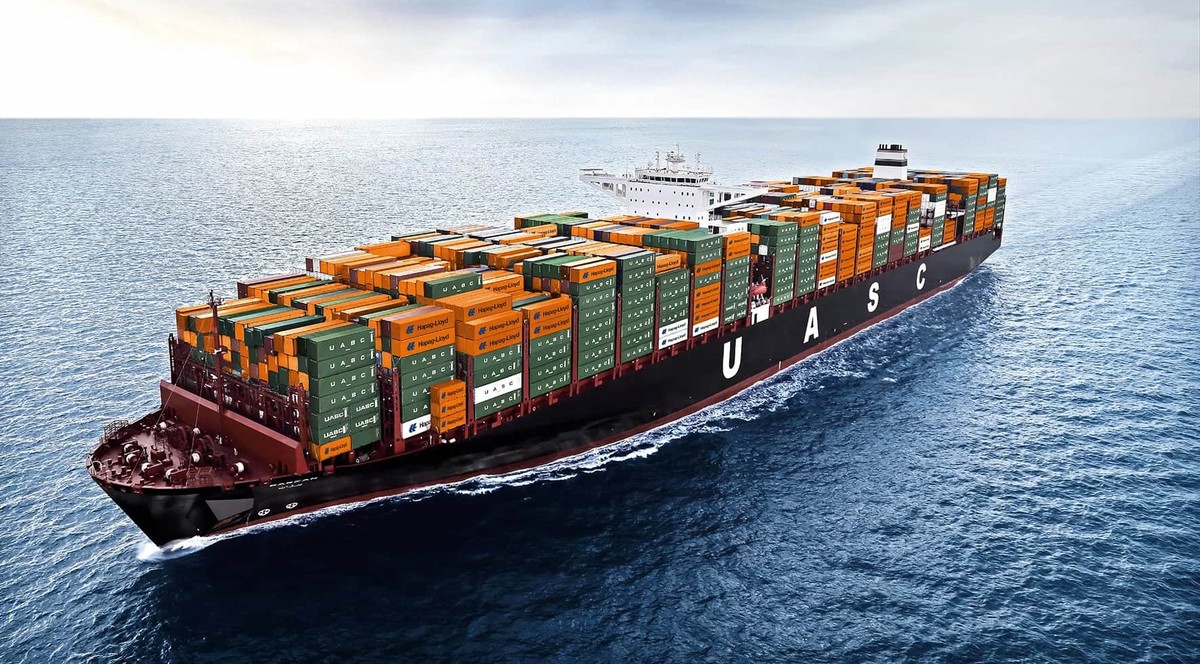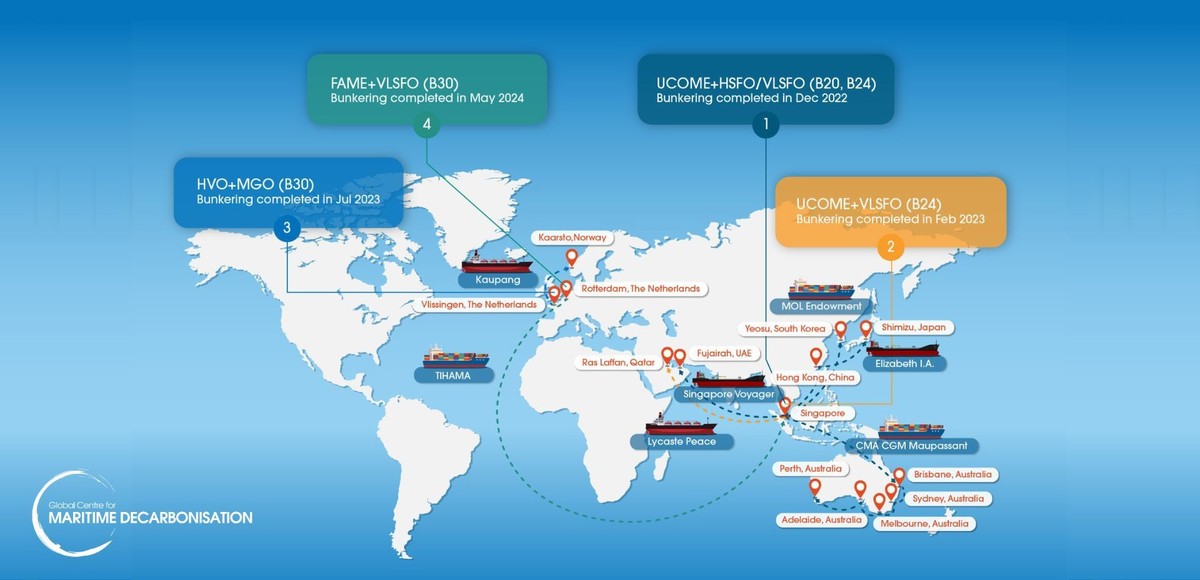Bio-blends cut WtW emissions by 20% across four trials – GCMD
The use of FAME-and HVO-based biofuels blended with HSFO, VLSFO and MGO resulted in a 20.3% reduction in GHG emissions on a well-to-wake basis compared to using fossil fuels across all four trials, GCMD's chief executive Lynn Loo said.
 PHOTO: Hapag Lloyd's container ship. Hapag Lloyd
PHOTO: Hapag Lloyd's container ship. Hapag Lloyd
The Global Centre for Maritime Decarbonisation (GCMD) has concluded its two-year biofuel trials.
As part of the GCMD's final biofuel trial, oil and gas giant BP bunkered a Hapag-Lloyd vessel with 4,500 mt of B30 blend in the Port of Rotterdam. Hapag-Lloyd-owned container vessel, Tihama, was bunkered with a B30-VLSFO blend, consisting of 30% bio-component blended with 70% VLSFO. The biofuel component was fatty acid methyl ester (FAME) derived from food waste.
“GCMD and Hapag-Lloyd determined that the consumption of the 4,500 mt B30 blend of FAME and VLSFO resulted in a 27.9% emissions reduction compared to sailing on VLSFO,” the GCMD claimed.
The GCMD started these biofuel trials in July 2022. During the trial period, a total of seven vessels were bunkered with around 10,000 mt of different ratios of biofuel blends across 14 ports, including Singapore, Rotterdam, Fujairah and Hong Kong.
The vessel segments included container ships, tankers and gas carriers.
Hydrotreated vegetable oil (HVO) and FAME-based bio-components were blended in various ratios, including 20%, 24% and 30%, with conventional fuels such as VLSFO, HSFO and MGO making up the remainder of the blend.
The biofuel blend used in the final trial was dosed with an organic tracer in a storage terminal outside the Netherlands, the GCMD said.
 MAP: GCMD's two-year biofuel trial. Linkedin of Lynn Loo
MAP: GCMD's two-year biofuel trial. Linkedin of Lynn Loo
Marking fuel with a tracer
An organic tracer in fuel quality checks is a specific compound or substance added to fuel to help monitor its quality, origin, or to detect contamination. The tracer is chemically stable and easily detectable across the supply chain.
“These markers can be added to both fossil and biofuels at extremely low concentrations, even in the parts per billion (ppb) range,” explains tracer provider Authentix.
“Despite their minute presence, the sustainable fuel tracking solution allows for the quantitative measurement of any product compromise, whether due to the diversion of unauthorized product from an untrusted source or by contamination with other low-cost or substandard additives,” it adds.
While the GCMD highlights the successful use of the fuel tracer in its trial, Johannes Schurmann, commercial director at FincoEnergies, told ENGINE that using a physical tracer is “insanely hard to organise” in practice.
“And it is quite costly because you need to physically put tracers in all those feedstocks. Because they’re coming from all over the world, it’s quite costly to organize that. From a physical standpoint, we are not yet convinced that such a system would work,” Schurmann argued.
By Konica Bhatt
Please get in touch with comments or additional info to news@engine.online





